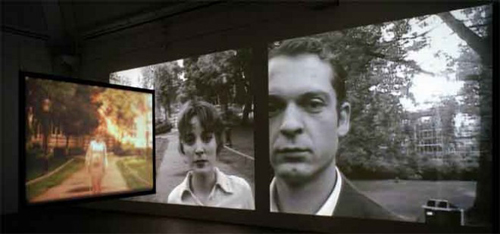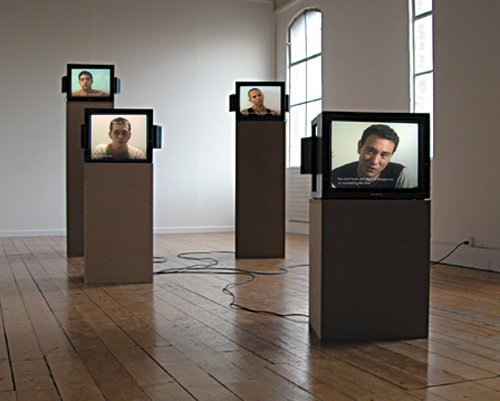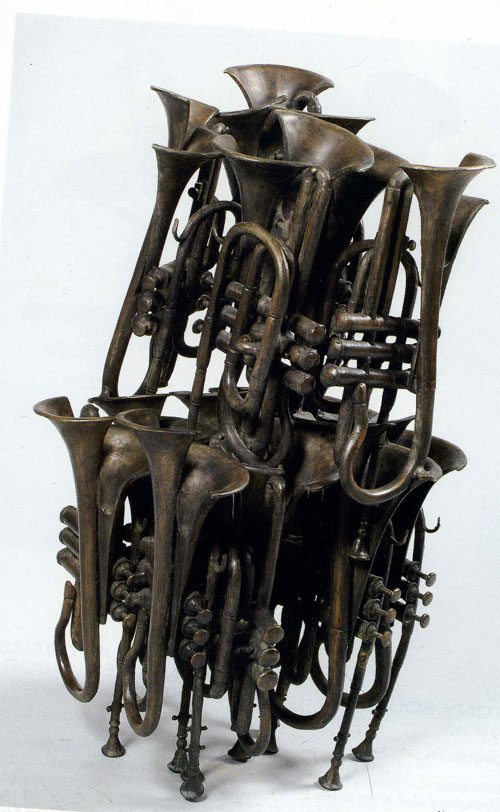CaixaForum – Barcelona has a special program for summer: From the 17th of June until the 14th of August, the exhibition Streamside Day Follies (2003) by Pierre Huyghe.
Huyghe is one of the most important French video and film artists. His works are inspired in enigmas that lead the spectators to imagine certain evocative images, from which he approaches to the cinema structure.

In his work Streamside Day Follies (2003), Huyghe discusses the relationship between cinema and reality, transforming fiction into a potential reality that is the consequence of a visual architecture invented by the artist. His purpose is to explore the emergence and construction of different forms of tradition and its relation with some ritualistic social expressions in the contemporary culture.
This work shows images of the construction process of Streamside Knolls, an American housing complex, as well as the party that took place during its inauguration. It’s a metaphor or a reality of the modern methods for the construction of a community, including all rituals that are involved in the process.
Pierre Huyghe was born in 1962 in Paris, France. He studied at the École Nationale Supérieure des Arts Décoratifs in Paris. The development of his interesting career has led him to exhibit his works at the best museums in the world. His favorite topics are madness, leisure, adventure and the celebration of creation.
One of his artistic obsessions is the cinema as a generator and transformer element of memory. Perhaps his most interesting work in the field of cinema is the video based on the bank robbery that appears in the movie Dog Day Afternoon (1975) directed by Sydney Lumit. In this filming reconstruction, Huyghe analyses the capacity of cinema to alter or preserve memory. The robbery was dramatized and played by Al Pacino and was based on a true story that had provoked a shock in public opinion.
The interesting aspect of this work is the brilliant way in which he uses concepts to recapturing the unfair social structure that leads people to madness, as an ideological guideline that is deeper than a physical breakdown. The game of seeing the reality from the fiction perspective to highlight the ignored aspects by real reasoning is one of the wonderful things that Huyghe wants us to analyze from his conceptual video installations.
The presence of sensitivity in his work is closely related to the symbolism of the Belgian playwright and essayist Maurice Maeterlinck. Wassily Kandinsky affirmed that Maeterlinck was able to create an atmosphere of invisible and shady forces.
In his work Les grans ensambles, Huyghe leaves behind his conceptual approach and shows a prominent interest for aesthetic by focusing on fog, smoke and clouds. The projection of two social housing towers that were built in the 1970’s is a poem to the disastrous and unsuccessful housing project. This work shows the movement of lights in dark windows that reflect the mist and the ghostly silhouettes of the trees swaying by the wind.
This installation is a curious homage that Huyghe pays to Le Corbusier, where the two towers seem to communicate by means of a strange strobe, even though this is a big conception mistake about the meaning of life quality versus social solutions.
For more information: http://www.mediatecaonline.net/mediatecaonline/SFitxaActivCurs?ID_IDIOMA=es&clave=AC00436&member=7&total=7
 Nancy Guzman
Nancy Guzman
La Caixa Forum in Barcelona is a marvelous place to visit if you are spending a few days in an Barcelona accommodation especially when you have the chance of getting to know Pierre Huyghe´s work.

 English
English Translated by: Hans
Translated by: Hans


